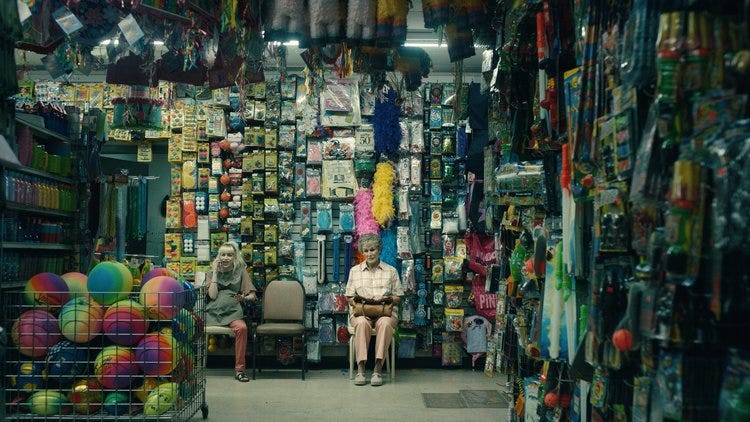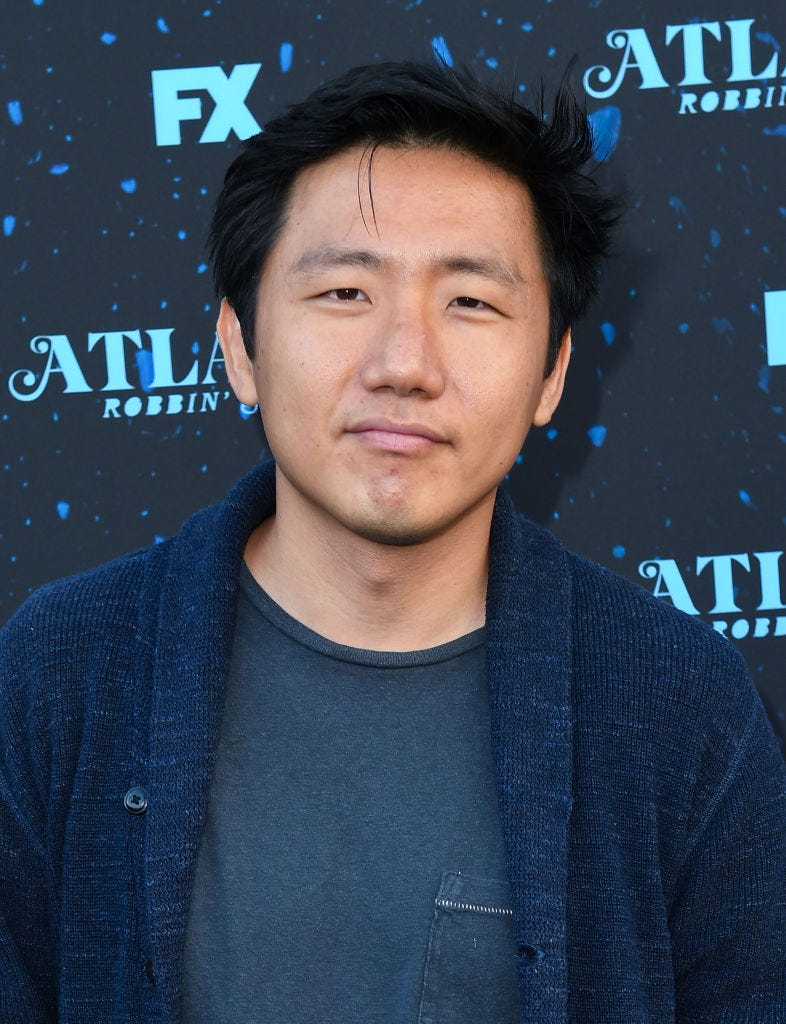So, in A Swim in a Pond in the Rain, and in earlier posts here, I’ve mentioned the “Hollywood Version” – a pithy statement of the essence of the story.
Some examples:
Romeo & Juliet: Star-crossed lovers are denied.
A Christmas Carol: A stingy man is reformed.
“The Overcoat” (classic short story by Gogol, that we’ll be doing later): Non-entity briefly flares to life, is punished.
Star Wars: A rebel alliance fights back against, and eventually triumphs over, an evil empire.
In workshop, I encourage my students to try to come up with the Hollywood version of a story before we start critiquing it. (If you found a weird machine in your front yard, you’d want to know what it was meant to do before you started trying to change (“edit”) it.

If we know what a story is trying to do, we can then evaluate every part of it in that light. If we don’t know, our critique may be a little scattershot; people just critiquing to critique. (“I wonder if you might want to do more with the mom, and also, instead of that pink motif, go with green?”)
These “Hollywood Versions” often go through a sort of development process. They may start feeling vague, concerned mostly with details – a sort of point-by-point talk-through. (“Then this happened, then that happened…”) As we work through successive versions, the goal is for these to become shorter (pithier) and more concerned with the essence of the story - with its larger implications, the way in which it aspires to the mythic or archetypal.
And, if we can’t come up with one – or it takes fifteen sentences, or sounds like someone profligately recounting the details of a long, winding dream he had last night – this tells us that the story hasn’t quite decided what its essence is.
For a successful story, coming up the Hollywood Version can help us understand why the story is good.
So, let’s try this exercise now, with “My First Goose.”
A first attempt at a “Hollywood Version”:
The narrator is meeting with Savitsky, who mentions someone named Chesnokov, then asks the narrator if he can get along with “us” – because the narrator, apparently, is wearing glasses and “they” will kill a man for that here. Can he manage? The narrator says he can. Then he’s led to the village by a quartermaster, who sets his trunk down, and then some Cossacks come over (and so on, for several more rambling paragraphs).
What we want to ask of this, as we try to improve it, is: “Well, so what? What is the larger meaning of those individual elements? Of what are they in service? What is the fundamental core-story here?” To do this, we try to simplify down to the essential actions.
Second attempt:
A guy gets an assignment. He goes to the place he’s assigned to go. The people he meets there don’t like him. He gets them to like and accept him.
One step simpler:
A man is rejected, then gets accepted.
Infusing a little more meaning:
A man is rejected by a group of violent men, then gets accepted by proving he is capable of violence.
So, “My First Goose” is the story of an audition of sorts.
One way of getting to know a story better is to go through it scene by scene, with the Hollywood version in mind, asking of each: “Hi, hello, may I ask what essential work you’re doing?”
A few years ago, I wrote the pilot episode for a TV show based on a story of mine called “Sea Oak,” and we got to shoot it, directed by the wonderful genius Hiro Murai.
Early in the process, we had this thing called a “tone” meeting. Hiro guided us in going through the script scene by scene, asking: “What is the purpose of this scene?” (Or, to paraphrase Dr. Seuss: “Why are we bothering telling them this?”) The idea was that every scene had to be doing some specific work (or it should be taken out). Once we knew what work the scene was doing, each team knew what it had to do - it knew the flavor of what it had to do. The knowledge of the scene’s function colored every decision we made about the acting, set design, costumes, lighting, blocking, etc.
Going through the script this way gave each of the individual teams a sense of direction; they were to make their decisions based on what would serve the scene’s larger purpose.

We might think of a story (any story) as a series of pulses. A pulse might be a scene, but, really, it’s a unit of meaning. What makes a story a story is the way one pulse leads to the next, which produces that lovely story-feeling. (“Ah, this led to that.”)
A story’s beauty has something to do with the feeling that what is created in one pulse is then used (seen, noticed, accepted, honored) by the next pulse; by the feeling that we are inside a non-random system, being well cared-for by the author.
We might also recall our earlier “bowling pins in the air” analogy; in one pulse, some pins get tossed up, and the next pulse “recalls” or “responds to” these.
There are all sorts of ways to think about stories, and, as I try to say often here, none of these are right or definitive. They are just ways of looking somewhat rationally at what is ultimately mysterious ad irreducible. But we make these models to help us understand what it was that pleased us about a story.
So, let’s try to list the main pulses of “My First Goose.”
According to me, these are:
1) Narrator gets an assignment (page 50 to middle of 51).
2) He travels to the site in the company of the billeting officer (page 51 to the top of 52).
3) The Cossacks torment him (i.e., don’t accept him) (the rest of page 52).
4) He meets, then abuses, the old woman and her goose (last few lines on 52, first eight grafs on 53).
5) The Cossacks, reversing themselves, accept him (last three grafs on 53 to middle of 54).
6) Conclusion (last three grafs on 54).
And here is a pdf of the story, with these pulses marked:
What I’d like to do over the course of the next series of posts is to go through these pulses one at a time. This may be a little intense and, uh, slow, but I have a sense that it is time to kick our (excellent) relation up a notch. (My gut-feeling about the tens of thousands of you out there is that, with the world falling apart and all, you crave intensity, and a challenge, recognizing that, when we pour our energy into something like this, that doesn’t hurt anybody, we make the world incrementally better.)
What we want to look at is how the pulse is fulfilling its purpose. In pulse one, for example, the purpose of the pulse (“The narrator gets an assignment”) could be accomplished in any number of ways. Why did Babel choose to do it the way he did? How did his choices narrow the path of the story?
So, next post, we’ll take up…the first pulse. This approach will take some patience on your end, but my hope is that it will be worth it in the end and will deepen our way of working together.
As always, thanks for being here, and for all your hard work.








Just a quick procedural thought - it's totally fine not to like or get a story we work on here. Mostly, I love the stories I send out (and I love this one) but YOU don't have to love them, in order to work with them. (And I will be sending out stories I don't love, from time to time.) Think of these stories as cars, and we are mechanics. Any car will teach us about auto mechanics, since every car works on the same general principles. If we don't like something about a story and (very important) try to be specific about why - that is good work to do. The key is to be specific and couch the criticism in some larger notion - we want to avoid the "thumbs-up/thumbs-down" approach.
So don't feel bad if you don't like a story - accept that and roll up your sleeves to see what benefit there is for you in investigating the "why" of your resistance.
Having said that, when I read a story that has withstood the test of time, and I don't like it, I remember that old story (or maybe it was a cartoon):
Guy in Museum, to Guard: I like this painting. Yeah, it's good.
Guard: Sir, the painting is not the thing being judged here.
Back when I didn't get Chekhov, my view was: "Well, these stories are still around after all these years. So let me be humble and see if I might be missing something."
Turns out, I was.
So, once we work through this, and some of us still don't like it, that is perfectly wonderful. That is, actually, you learning about your deep esthetic values.
Onward!
All I can think about is we almost got a TV show by George, directed by Hiro Murai.
Damn.